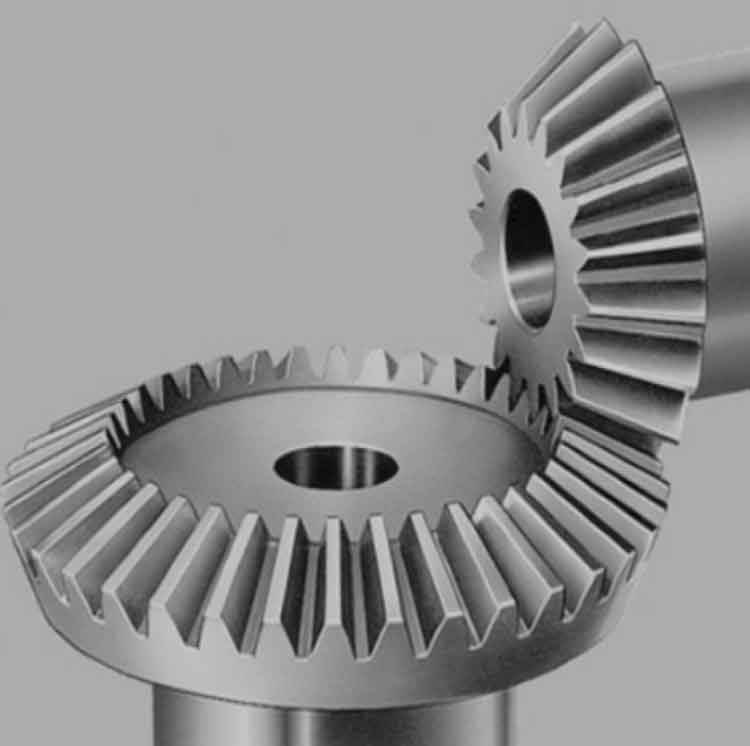Advancements in straight bevel gear technology have been made to improve performance, durability, efficiency, and reduce noise and vibration levels. Here are some notable innovations in straight bevel gear technology:

- Improved Tooth Profiles: The development of advanced tooth profiles, such as modified profile shift, optimized involute, and advanced curve crowning, has led to enhanced gear meshing characteristics. These tooth profiles optimize contact patterns, reduce stress concentrations, improve load distribution, and increase overall gear efficiency.
- Surface Coatings and Treatments: Various surface coatings and treatments have been introduced to improve the wear resistance and durability of straight bevel gears. Techniques such as nitriding, carburizing, shot peening, and PVD (Physical Vapor Deposition) coatings are applied to enhance surface hardness, reduce friction, minimize wear, and increase the gear’s resistance to pitting and scuffing.
- Precision Manufacturing Techniques: Advanced manufacturing processes, such as CNC (Computer Numerical Control) gear cutting and grinding, have improved the precision and accuracy of straight bevel gears. These techniques ensure consistent gear tooth profiles, tighter tolerances, and reduced manufacturing variations, resulting in enhanced gear performance and reliability.
- Computer-Aided Gear Design and Simulation: Computer-aided gear design software and simulation tools enable engineers to optimize gear geometry, tooth profiles, and performance characteristics. These tools simulate gear meshing, contact patterns, and load distribution, helping to identify potential issues and optimize gear designs before physical prototyping. This allows for more efficient design iterations and reduced development time.
- Material Advancements: Advancements in materials have resulted in the development of high-performance alloys and heat treatments for straight bevel gears. Materials such as high-strength steels, alloy steels, and specialized alloys with improved fatigue resistance, wear resistance, and toughness are used to enhance gear durability and performance in demanding applications.
- Gear Tooth Modifications: Tooth modifications, such as lead crowning, tip relief, and profile correction, are employed to optimize gear meshing characteristics. These modifications help to minimize noise, vibration, and tooth contact stresses, while improving load distribution and overall gear performance.
- Noise and Vibration Reduction: Innovations in gear design, tooth profile optimization, and manufacturing techniques have resulted in reduced noise and vibration levels in straight bevel gear systems. These advancements contribute to quieter and smoother operation, particularly in automotive, aerospace, and industrial applications where noise and vibration control are critical.
- Integrated Gear Systems: Straight bevel gears are being integrated into advanced gear systems, such as multi-speed transmissions, continuously variable transmissions (CVTs), and hybrid drivetrains. These integrated systems optimize gear ratios, enhance powertrain efficiency, and improve vehicle performance and fuel economy.
- Gear Inspection and Quality Control: Advancements in gear inspection technologies, including coordinate measuring machines (CMM), gear profile testers, and non-destructive testing (NDT) methods, enable precise measurement and verification of gear geometry, tooth profiles, and alignment. This ensures the adherence to quality standards, reduces manufacturing variations, and improves gear performance.
These advancements in straight bevel gear technology contribute to improved efficiency, durability, and performance in various industries, including automotive, aerospace, industrial machinery, and more. By incorporating these innovations, engineers can design and manufacture straight bevel gears that meet the increasingly demanding requirements of modern applications.
